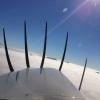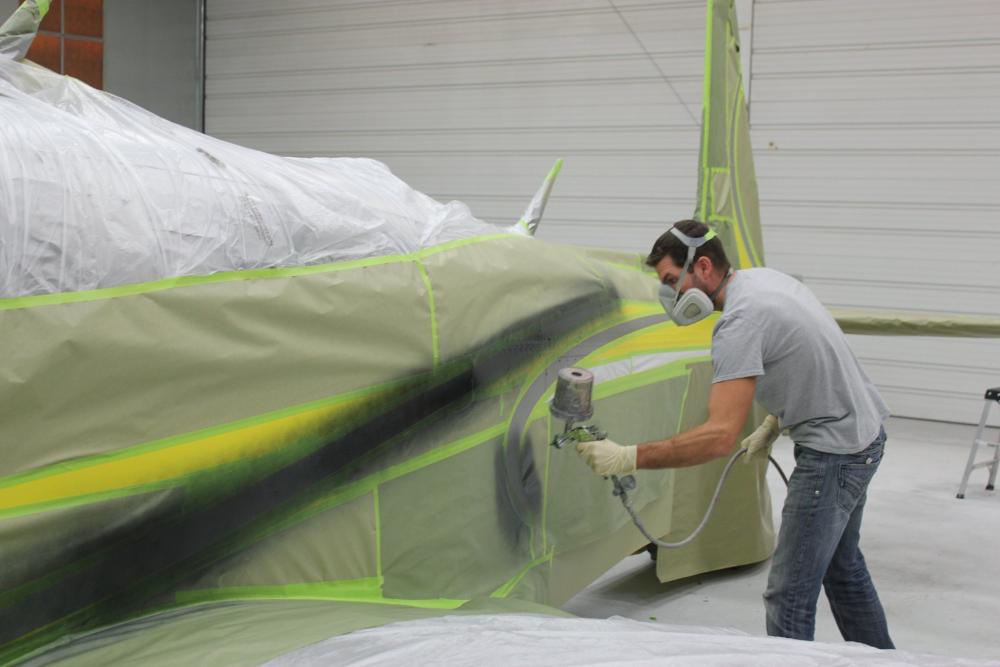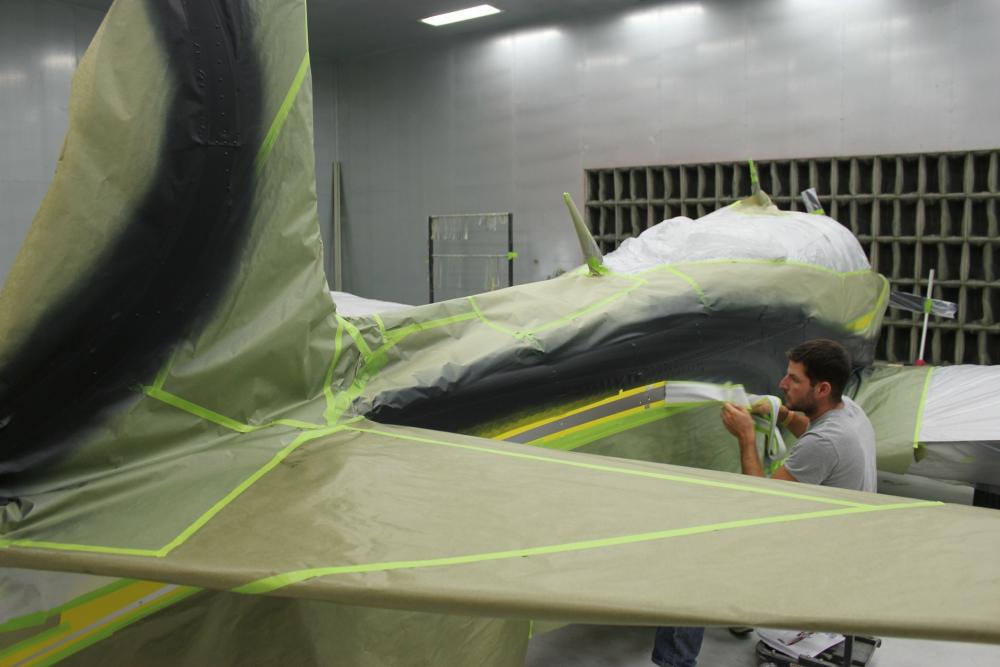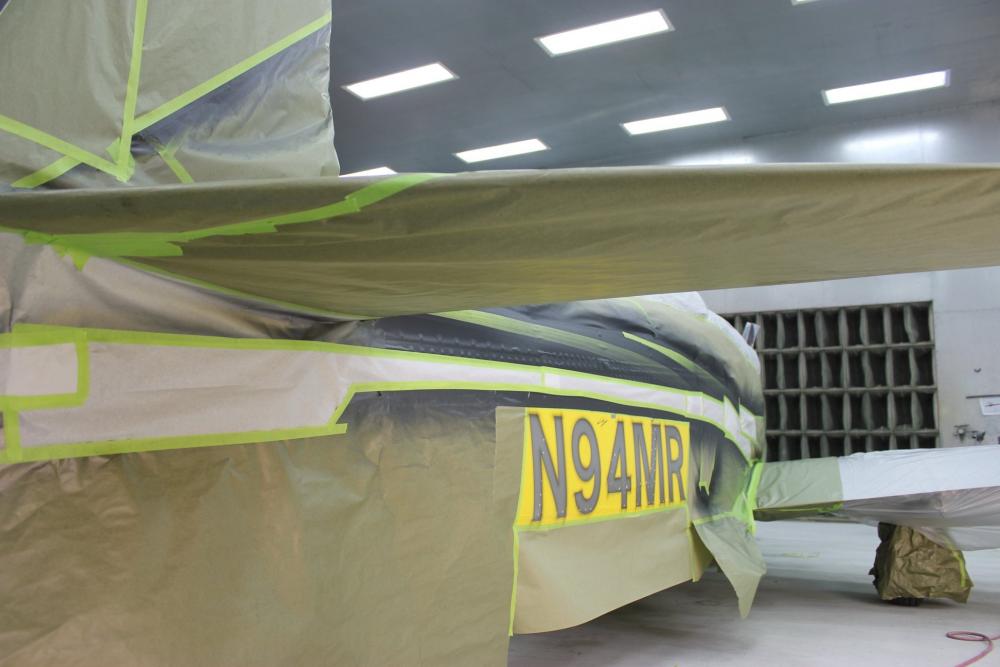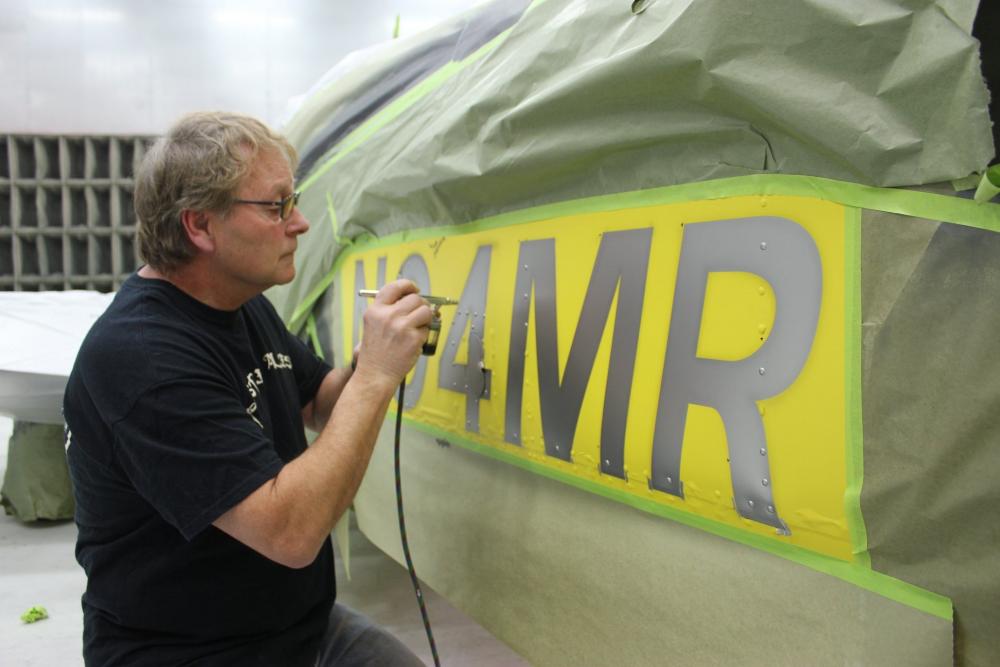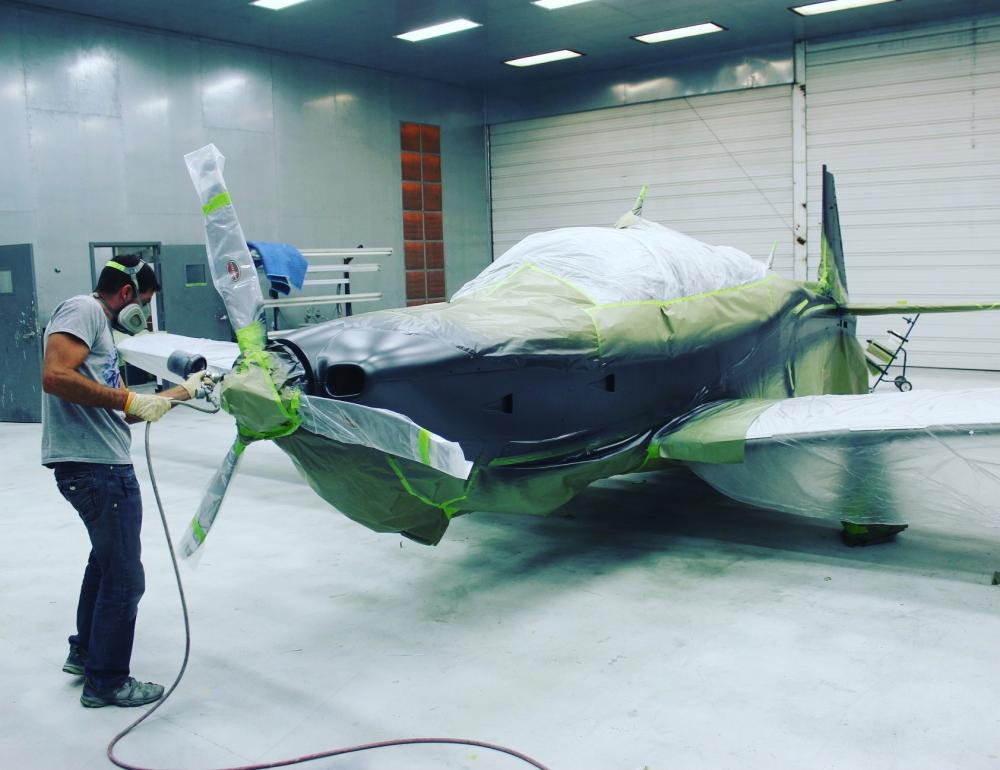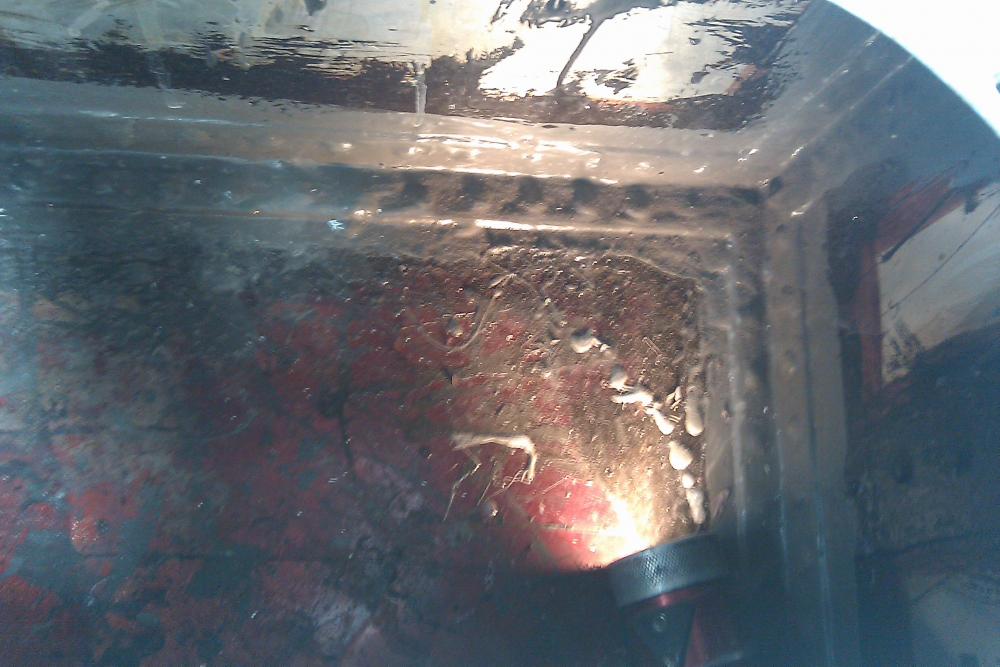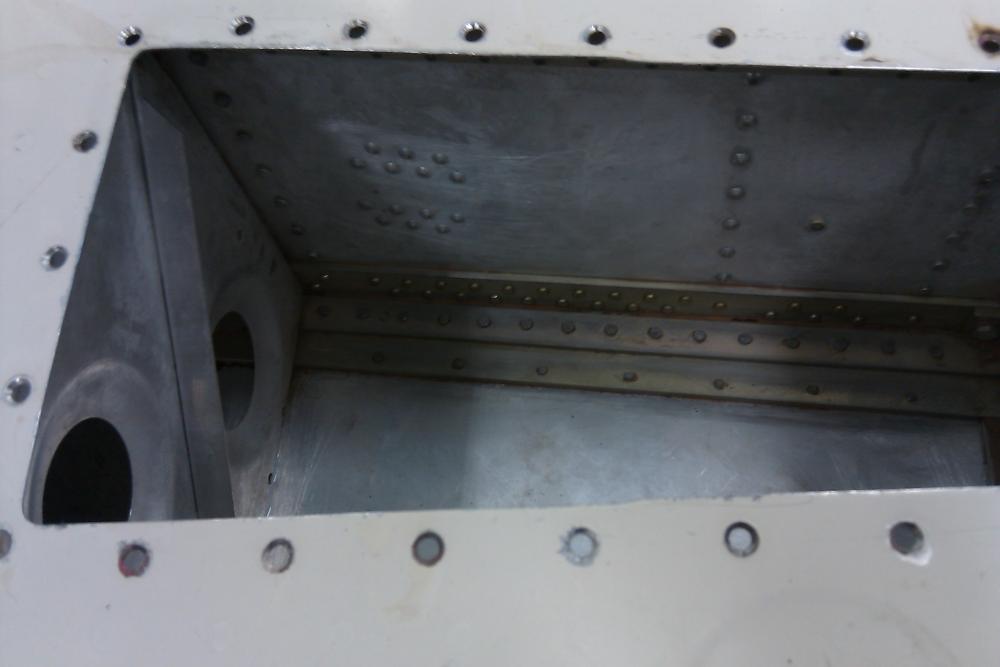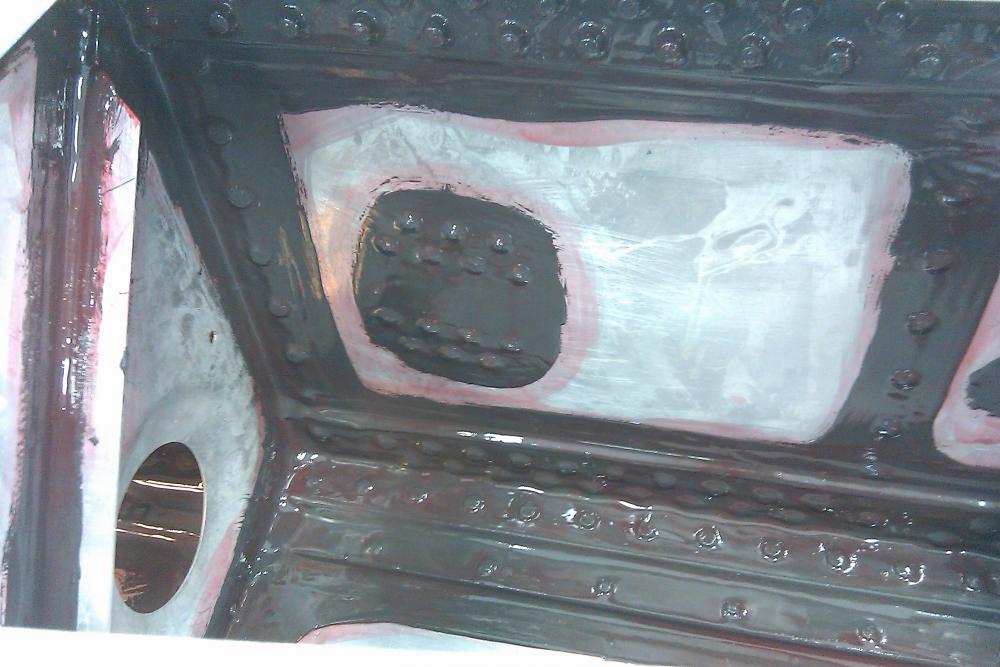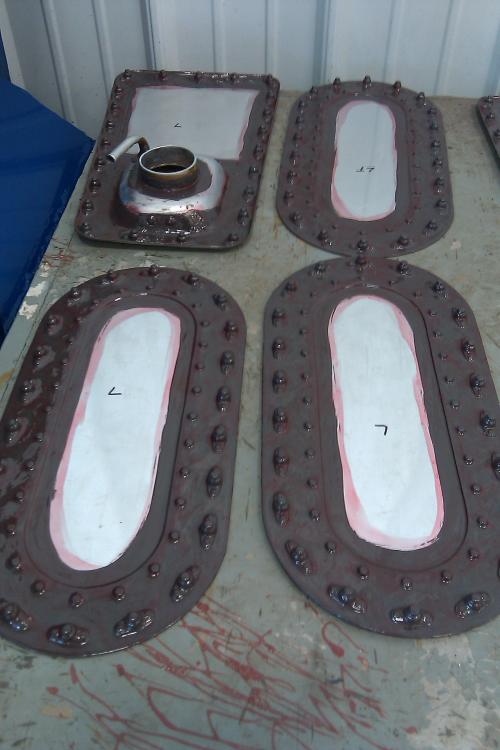Leaderboard
Popular Content
Showing content with the highest reputation on 02/21/2018 in all areas
-
5 points
-
Did somebody say post counts have an implied meaning? Mom always said... quality over quantity... Did I mention, I have experienced icing, twice...? Once VFR with my work boss on board. Another time in IMC with my transition trainer on board following an IFR procedure into my home drome.... Discussions like these have helped me stay out of icing... learn about real rates of accumulation... know more about the outs... how to develop a plan B, and C.... I’ve also noticed along the way, no matter what I wrote, it is possible for someone to misinterpret what I was trying to say... (mostly my fault) Often, I do a final check after I hit the post button... unfortunately, that doesn’t always work... How Long have we been doing this? Nine years? Throw on a touch of forgiveness, a reality check, and possibly ask if he really meant that... Then move on... It is near impossible to keep up on everything posted on MS. It is better to maintain respect for each other, than to be perfectly right all the time... It isn’t easy being human. Now, how do I boost my quality score? Best regards, -a-4 points
-
When I posted above, I should have pointed out that the lamp I changed indicated the POSITION of my landing gear.3 points
-
I totally agree. When I had my 261 conversion I generally flew her in the low to mid Fl20s. I always had a secondary oxygen bottle hooked up with attached masks strapped to the passenger seatback. I had the red/green ball flowneters in all the oxygen lines, and I religiously checked to to see that oxygen was flowing about every 10 minutes. In retrospect that was not often enough. On a flight across the country with a friend who was also a CFII /ATP, we decided to take turns taking off our masks at Fl270. I didn’t last very long - about 2 minutes before breaking into laughter and then becoming totally incoherent. I put the mask back on (these were the really high quality expensive masks with built lt in microphones), and took a good 5 minutes before I felt normal (but probably wasn’t). We repeated the test with my friend who simply dozed off, and his recovery time was a bit better than mine after we got his mask back on. Thereafter I tried to fly no higher than FL230, and mostly less than FL210. Now with my J I use oxygen above 9500’ as I feel sharper in my thinking than without oxygen. If I am on a long flight in less than ideal conditions, I’ll use oxygen at 8,000-8500’. I can feel my age (82) being a factor now, but I have no trouble breathing in non-Flying situation. Hypoxia can sneak up on you. (As can CO). Sent from my iPhone using Tapatalk3 points
-
My team and I are thinking about sponsoring a Fly In here in Lakeport, CA. We are thinking about having a few static displays to play with to include Garmin products, Avidyne products, Aspen, Artex, Speed Mod items, etc. Would anyone be interested in attending and if so, what would you like to see? We are wanting to show everyone what is out there and available and to give everyone an opportunity to play with the new toys here on the ground also. What are your thoughts? Greg Baker Lasar, Inc.2 points
-
I have replayed the video like 5 times and swear he is pulling (clockwise) the first time to make it tighter. After the WD40 he pushes (counterclockwise) to loosen it.2 points
-
My understanding is that we can acclimatize to just under 18000', but above that we're in the death zone since we're in a state of slowly dying till we get back down. Of course Sherpa have proven to do exceptionally well at altitude since as you say they were born and raised at higher than any one else. But we all adapt to altitude in differing degrees. And naturally high altitude mountaineering has favored those that are well adapted to altitude. My wife and I are both long time climbers, and she did quite well at altitude having summitted some rather technical ice routes to just under 23000' including South America's highest peak Aconcagua (22837') - all without Oxygen or being guided. For real climbers, climbing is all about the challenge and style by which you get to the top, not just getting to the summit but the style in which you got there. Purist consider use of aides like O2 as cheating. For them O2 is only for emergency use to get down . Taking Everest as an example, Oxygen was considered essential to survive and it was widely believed it would be impossible to survive without it. Also at the same time summitting a mountain like Everest required siege tactics with lots of people and sherpas that ferried supplies higher and higher till the summit was in reach for a small well stocked party from a high camp. The same siege tactics were used originally to climb El Capitain sheer rock face in Yosemite and many other first ascents of tall rock faces. But the tactics were never endorsed by the climbing world as a whole with many believing such ascents should wait till they can be first climbed in good style. Then in the 70's, the game was turned upside down when gifted and purist climbers Reinhold Messner and Peter Habeler, whom had been making very quick and light ascents of the major Alps climbs, applied the same fast and light tactics to big mountains, a style referred to as Apline Style in contrast to Siege or Expedition style, and went on to climb Everest in '78 and K2 in '79 without O2. He even went back to climb Everest solo in '80 without O2. Reinhold became the first to climb all fourteen 8000 meter peaks without O2, mostly all alpine style in small parties; through the 1980's. (https://en.wikipedia.org/wiki/Reinhold_Messner) Over the following decades climbers, (real climbers that spent decades of working up through increasingly challenging climbs), continued to climb the high peaks without O2 until Everest had been climbed by a few hundred climbers and many paid the price trying as well. (http://adventureblog.nationalgeographic.com/2016/04/21/how-climbing-everest-without-oxygen-can-go-very-wrong/) But all of that changed, not really out of safety, but commercial climbing came into being to capitalize on a growing number of wealthy and essentially want to be climbers that had the cash to pay the ~$30K to be guided up Everest's rather non technical route with O2 to greatly improve odds of success. Of course getting up Everest by any means other than helicopter is a huge challenge, but being guided with O2 up a mountain is only fraction of the challenge taken on by a small team of climber that are all sharing in the leading up the mountain. But during those years of ascents without oxygen, we learned a lot of about our ability to survive and adapt without O2 as well as the issues that accompany O2 deprivation or hypoxia and a lot of myths were squashed. One popular one you still hear in the pilot community is that as you get older your ability to function without O2 decreases. Yet the climbing community demonstrated that high altitude climbers were actually improving with age to some point in near middle age compared to younger 20's that proved to be less tolerant. Judging by the number of climbers we still have doing it in their 50's and even 60's, its appear to not drastically decline off in later years either. I never did any of the high altitude mountains with my wife. I learned early on my thing was rock climbing and rock'aneering. I climbed all the major walls in Yosemite valley in the 80's (El Capitan, Half Dome etc). My highest rock wall was Mt Whitney's vertical to overhanging Keeler Needle climbed in a day (13 pitches (rope lengths) at over 14000'; not very high but plenty high enough to feel hypoxic when working really hard. Back to drying paint ..... which is looking very nice!2 points
-
2 points
-
2 points
-
Way to go Lance! You can sure keep a secret! Tell the whole world why don't you! Did you post it on Facebook too?!2 points
-
The chances are if you go down in such a fashion that the main door is jammed closed, you are probably unconscious or physically unable to get to the baggage area. In your emergency training and on your emergency checklist add "open the door" if you are going to land anywhere but an airport. This does a couple of things. 1) keeps the door from jamming (obvious) and 2) tells the first responders where to go to pull you out. Most will not be familiar with ingress and egress of a Mooney. This one simple thing is probably why I am here today to write this. Bobby knew right away where to go to get me out of a burning plane. Over the last 20 years, I have heard of a number of Mooney baggage doors "pop open" in flight to the expensive tune of repair. Personally, I teach "if the baggage door is unlocked, leave it up, and if it is down, always lock it" Sometimes this causes me to unlock and lock it a few times before flight, but so be, I know I wont pop open like what has happened at the PPP to cause them to develop a no fly policy if not locked. Its your plane, you can do what you want of course, but consider mitigating the problem (door jamming closed) with a solution more in line with the cause (open door to prevent jamming). Now if your door handle falls off while you are sitting on a ramp in Gladewater Tx, thats a different problem with a different solution, right Kelly?2 points
-
2 points
-
2 points
-
Well - Anthony, you were the guy I was referring to as triple my quantity score. Undisputed. But - quality - your staccato list style, of your very own, always lots of thought and work in your posts. We will give you the quality prize too! But if you want to increase your quality over quantity ratio, how about you remove all the vowels.2 points
-
Nah, you need to read the rest of the thread. The bolt is the one spec'd in the parts manual, and matches the measurement tolerances for said bolt. The whole design is an "as required" arrangement that varies from hand-build airplane to hand-built airplane. A longer bolt obviously wouldn't work, and a shorter one wouldn't have the required shoulder length. There's a reason the shims behind the baby shoe bracket are spec'd "as required" rather than a specific size.2 points
-
It flys like a dream..... Put about 10 hours on it so far...2 points
-
That's a great price! Unfortunately I don't think that includes the EA100 which allows you to get rid of the KI-256. But for another $2795 (list) you can get that. That would make it 11,895 compared to Peter's quote of 11,600 for the G5 and KI-300. How about we all chip in $10-$20 each to pay the $295 difference so Peter can get the Aspen he's always secretly wanted?2 points
-
I didnt see the 2000 system listed online; if it helps anyone, they quoted me $16,900 and included the AOA and SV with that price. My wife said no. If this is an annual cycle, Ill just wait a year or two until she forgets.2 points
-
I was amazed at a previous thread about paint job similarities. Yea, a little snarky. I know folks pay and get paid for designing paint schemes, but these things get out of hand sometimes. I think the metallic schemes are really good looking. This plane will attract a lot of attention where ever it goes.1 point
-
Sorry, I was being a bit snarky with the response...I'm a FlyQ person myself, so no need for FF.... Never liked FF much, but that's just my personal feelings, nothing more, nothing less.1 point
-
The OP shared the cost with me. Probably a little higher than most the CB would pay on this site. First class quality IMO! I’m still going to fly over and look at the shop. @mooneyman is the R still over there?1 point
-
Yes, those are the AVEO wing tips. We're working on getting the K models added. It turns out there is a difference in the aileron weights between a J and a K. So these tips don't actually fit properly. We're waiting for a new set that will have been slightly changed to accommodate all the K models from 231 to Encore. I think they look great and the LED lights are really nice and bright.1 point
-
Yes a new processor, more memory and screen would be nice in the ASPEN if not already done. This should be done every 2 to 4 years IMHO. The advances in processors is always phenomenal. My opinion is they, ASPEN,need to make the fully capable box available for around $6AMU plus install as a normal price. The VFR version is somewhere in that price range now. With that pricing they would be more competitive with the new boxes coming on the scene now. What more can ASPEN put in the boxes that they don't have now? I would like to have an ASPEN or 2 G5s in my plane but ultimately what does that give me? The biggest thing would be an HSI after that not much more information than I already have. I'm looking to see how the G5 will interface with my IFD540 and the STEC 30 AP and at what price point to get 2 of them to replace the AI and the DG.1 point
-
Too funny. That is actually an old photo. This is what it looks like now. Sent from my iPad using Tapatalk Pro1 point
-
Trade you my red/white switch for your panel? Seems like an even trade to me since I'm having the G5 put in this week.1 point
-
Yes, the Fire Dept will cut off your roof. But they will not be the first people on the scene, and those people can often provide help first. Especially in the event of fire . . . . I am also religious about locking my baggage door, just after throwing the canopy cover bag inside and covering up. When I fly, it's unlocked but securely latched right after putting the tow bar inside.1 point
-
I updated my post for economic reasons... (Matt covered it pretty well) There is a lot of value with an HSI in IMC... old mechanical sitiuational awareness.... now digital SA. Probably not so much value when you have magenta lines... Best regards, -a-1 point
-
If they are the fancy ones being shown at the Summit... They are built with some pretty high precision... integrating lights very nicely! Awesome composite compound curves. Hope i’m Right on this one, -a-1 point
-
1 point
-
1 point
-
I will not say they don’t do good work because I’m sure it’s great. But I saved $4,000 for the same work I had done for my adsb install last year. They wanted the plane for three weeks. The cost of flying it over there getting home then getting back over there wasn’t even in that $4,000. Av-com finished the work in three days and came to me. I had the ease of mind watching his work and also learning a lot about my plane. And the confidence if I have issues with it I know what I need to tell Barry so he can fix it right away. Cheaper doesn’t always mean it’s not done right. And more expensive doesn’t always mean it’s done better. Sometimes saving money is just smarter. I will admit I’m bias because when the quotes came back they were holding onto the Avidyne rebates to pad their price. I wasn’t impressed. And they won’t get any of my business or good words beyond saying I’m sure they do good work. Sent from my iPhone using Tapatalk1 point
-
Kyoshiskip, if oldguys instructions don’t get it for you let me know and I will try to capture a screen for you.1 point
-
I think I derailed this thread a little. Great info though, and the paint job looks amazing.1 point
-
1 point
-
I find most of your posts quite useful whether we agree or not. I appreciate you relaying hard won experiences. I did not sense that you were advocating conducting Non FIKI aircraft operations in ice as a matter of SOP. I think that fear is an overrated motivator. While it heightens senses, releases adrenalin and increases heart rate, it does little to improve one’s ability to handle the challenges of managing a stressful situation in the cockpit. Fear that has degraded to panic can reduce a formerly well-functioning pilot to an indecisive mass that acts as if they’ve had no training. I have always disliked the “178 Seconds to live” CASA campaign and all of it’s offshoots. Telling VFR pilots that if they enter IMC they will depart controlled flight in less than three minutes on average might motivate them to steer clear of IMC, but it’s not helpful if it happens to one inadvertently and may lead to panic (and the performance degradation that comes with it) when calm assessment and decisive action would save the day. Ice in a non-fiki bird is not to be taken lightly, but the OP ended up encountering ice in the descent when there was no forecast of icing. Having just passed some large rocks prior to descent, it seems his only real option was to continue the descent and approach. In that situation, I would much prefer to know that the bird I’m flying will carry a reasonable load of ice before becoming a stone than wondering if I’m on the edge of a stall with a light layer of rime. I would not be comfortable with ice out to stall strips and your post makes me no more likely to fly in icing conditions. However, knowing the airframe will carry ice would likely provide some measure of comfort (an antidote to panic) in an inadvertent icing situation because it’s good to know the airplanes abilities exceed the comfort level of the pilot by a large margin. When that situation reverses or is an unknown, bad things can happen quickly.1 point
-
IIRC, the ICS button allows the pilot to work one radio, and the copilot the other radio, cutting off the intercom between them. I can't remember if it cuts out the back seat intercom, but I think it does. It would actually be great if I can get my wife to get her pilot's license so she can help out with ops, but right now I'm just happy she's willing to fly with me as a passenger. I'll keep working on her, though1 point
-
I've read through the posts and I think some of the information being provided to you is old information, other information is slanted. The message from Dale that you quoted is not unexpected. All of these manufacturers are competing for the same piece of real estate that Garmin is. Avidyne, Aspen, BK and L-3 are working together at different levels and support each others products. Garmin has taken a different track. They support their stuff first and then, being the shrewd business people they are, address the rest of the market to make sure there are no table scraps. Case in point. The GTX-345 when first introduced worked with their G500 (with I believe a firmware update on the G500). It didn't work on the Aspen. I'm sure not to lose sales to other competitors for the Aspen business, Garmin eventually allowed integration with the Aspen system. A GTX-345 will display traffic and weather on the Aspens. My advice as someone who has done a fair amount of avionics upgrades is to develop a must have list of features and compatibilities you need. Garmin is clearly an integrated solution, but if you are dead set on using FlyQ, good luck with making that work. Even ForeFlight (a Garmin supported app) is not a given with the Garmin suite of avionics . In my particular case, flying a single engine, one electrical system plane, I wanted to have electronic redundancy. The G500 does not have a battery backup. It also could not do a PFD to MFD reversion (I think the new touch screen does though). Pick what is important to you and look for the feature sets in the available technologies. I wanted active traffic without spending a lot more for it. With the amount of glass I have in the plane, the iPad app plays a secondary role. My plane is equipped with an Aspen 2000. It communicates seamlessly with the L-3 9000+. It communicates seamlessly with the Garmin GTN 650. The 9000+ sends traffic only to the GTN but I heard weather is now available. Not an urgent need for me since the Aspens both show weather as does the L-3 on it's own display. The 9000+ talks with a host of third party iPad apps but not Garmin Pilot. I like Garmin Pilot and if I did not have the Aspens or the L-3's displays I would be looking at a different solution. Garmin Pilot has the concierge function which works with the FlightStream 510 (only app that does). And it is my understanding the Avidyne integrators are all integrated with the non-Garmin hardware. So, how do I use all this stuff? The iPad with Garmin Pilot is relegated to the database update tool and manages the flight plans that I send over to the GTN or receive back from it. The app is used also for pulling up the approach plates. No traffic, no weather. The Aspens are used for displaying the flight plans, navigation and for traffic and weather. On the L-3 9000+, if I am enroute, will have the traffic set to the 2 mile range on the left side and the right side will be used for weather, METARs, etc. The GTN 650? for selecting Com/Nav freqs, VNAV calculations, selecting procedures, etc. I also have FltPln Go loaded on my iPad and is the backup to the backup for weather and traffic since it is an app that can be fed from the L-3 9000+ and it is FREE. Stay on the quest....1 point
-
Based on experience I now leak check any time the service center gets near my bottle. The small fittings are quite vulnerable. Our dentist how lost his life going to the PPP in AC a few years ago according to the way I read the report had a loose fitting post annual, his last known recording after leaving Michigan enroute was shortly after departure near FL 250. A most often overlooked item. Many of us rely on O2 it only takes a few minutes to spray the fittings,1 point
-
Hi clarence Thanks so much for this, this is exactly the one. Ill pimg it to gama, i thought it was the cam shaft but thats my old age memory, lol. I am sure they aleady know about it but want to make sure. Apparently, you can have the engine painted any colour you want, so i said screaming pink with glitter, Thanks again. ill post pictures later this week once i have killed off this australian flu i have. Damn criminal colonials,1 point
-
It’s funny I’ve been ridiculed for so many posts. I’ve only gotten icing a few times in many hours but twice it stands out. Once I was flying a 402C from North Platte, NE to Denver. I was droning along in the clouds for about a half hour when I heard a static sound like flying in rain. I looked outside wirh a flashlight and alarmingly, I picked up 3” of ice in about 3-5 minutes. I was close to Denver and getting vectored for the approach so I stayed with it. As I started down the approach it was icing up further and the boots weren’t helping at all. The heated windshield on HI was icing over to. Gear came down and prettt soon it took all 650 HP from those twin TSIO-520VB’s just to maintain glideslope wirh flaps up and gear down. Thankfully I broke out at 200’ and landed. When I eased the power off at 10’ the airplane stalled at 100KT. Later I was a Ca in a Beech 1900D. A legendary plane for climb and ice. Same situation, vectored for an approach in Kingmam, AZ the ice appeared in the tips of the clouds. Only this time it was mixed and rime ice and it was 2-3” a minute. Now a 2700HP airplane should handle it just fine and it is, but it was losing 30kt in the 30sec it took to manually inflate all the boots. Since then I don’t get anywhere near clouds near 32 degrees in a non deiced airplane.1 point
-
1 point
-
Yeah. Browsing around looking at panel gadgets just makes me shake my head.... Aircraft Spruce has a Century HSI listed for $15k.... I thought for sure it had to be a typo, I could put together a device that does all that digitally for under $30, plus about a week of my time to brush up on Raspberry Pi and program it.1 point
-
1 point
-
Thank you for those tips--those are good things to keep in mind. However, I almost ignored reading your post due to the sheer amount of hostility in the remainder of it. If your goal is to improve safety in our brotherhood of pilots, saying things in a way that is likely to be heard is probably the best way of doing that. I'll keep an eye on those wingtip fences, though--I hadn't thought about that before. And thank you for the writeup, @Marek7! Out here in the Northwest, we have a lot of forecast and unforecast icing. I'm dreading my first significant encounter, but it's nice to know the it's not an immediate disaster...1 point
-
If you contact Frank Crawford at Mooney International, he should be able to help you out. (830) 792-2920 or fcrawford at mooney dot com.1 point
-
I frankly have no idea what point you are trying to make here. Do you think that flying on a commercial airliner is inherently unsafe, so therefore all airline pilots are inherently suicidal? Do you think that airline pilots fly aircraft that are unsafe, rather than cancel or delay a flight? Do you think that airline pilots knowingly break rules and regulations and compromise safety? Neither I, nor any airline pilot I know, has ever done any of those things. I personally have cancelled or delayed flights that would have been legal but either I or another crew member thought it was unsafe, and I know many others who have done so as well. (I've been flying Part121 operations for almost 20 years and way more hours than I need to prove the point.)1 point
-
1 point
-
Hey guys I wanted to drop a few thoughts on this topic. By no means am I negating any other suggestions here or sw/fw version comparisons. I want to talk about the unbelievable importance of the installation. In almost all the threads I read I see very little on this subject which makes me assume either all the installation data including alignment and interference issues have been negated on this topic or assumed accurate. Having installed Garmin equipment for years (go back to Apollo) I can't say enough about how critical understanding, identifying and correcting any issues found during the pre-installation tests. With my background I have two areas that are continuously overlooked or not given their due respect. #1 The GMU interference test and #2 leveling both vertically and laterally the units to level of flight. These two items being done correctly will make the post-installation config/check-out process go smoothly and provide you the owner/operator reliable performance you've come to expect from Garmin. Holding an AP/IA and a guy that flies, I take the little things serious because re-work sucks and safety is paramount. I put these two items in that order for a reason. Without the in-depth knowledge of what it takes to install one of these, most installers discount or ignore the interference failures because going back to the customer for additional labor hours is taboo. And most operators don't know to ask or are told these are expect issues with this or that unit. Therefore no re-work. I haven't seen any complaints here on the topic of the shop needing to do additional work to make this happen. As a safety item, well I think this thread speaks for itself. Some of you either have them installed or are thinking about it and due to reliable performance issues you wouldn't think about using this a primary instrument. To me that's a backwards way of looking at something that should be considered an "upgrade" from existing equipment not an addition to. Additionally, this unit has provided flight data to the experimental market before becoming Part 23 certified. You have to know if the feds even thought the unit was going to have reliability issues as a primary instrument you wouldn't even be having this conversation. So, onto our story here: Garmin makes a point in all their manuals about how sensitive their units are and how important alignment is. Working with all the other digital AHRS manufactures Garmin holds the trophy for being most critical and for interference, the most sensitive. Guess that is good and bad. The bad is what I'm going to speak to. All of Garmin's HDG/AHRS units have required interference testing before an installation can be accomplished. This is one thing I've seen very little about in any thread. When installing a digital anything it's important to understand these units operate on a data buss and are constantly communicating with each other. If one has issues or reports bad data on the buss the other units can be impacted. Case and point. Installing the GMU-11 in our M20C we failed the interference test several times until we moved the strobe power ground from the shelf replacing it with a shielded wire run forward to the ground closer to the battery and isolated from the frame, replaced the hardware in the rudder bellcrank (pivot arm) and moved the ground for the tail strobe. All items found BEFORE anything was hard-mounted. Need to pay particular attention to the strobe power ground. You will rarely find one that doesn't have the ground point at or next to the power supply itself. This is one noisy bastard. If any of this is in question the G5 can be run in maint mode and you can check out the results for yourself. The GMU has 3dg +/- in both pitch and roll alignment to level flight. HDG alignment is suggested to be .5dg. Can some of this be mitigated or discounted as minimal system impact? Yes I'm sure it can, but it's you flying in IMC not the guy on the ground. Now, the G5 installation. You have 15dg on the longitudinal axis to play with but only 1dg of play in the vertical axis. To complicate matters knowing all the numbers and doing the math is a pain. For the record I don't like this approach. As an installer taking the guess work out by jacking and leveling the plane and hitting the button is a whole lot easier and more accurate than how the G5 manual has you do it. Which Mooney do you have? The M20C has a tilt of 8dg, I understand the 20J is a zero tilt. This needs to factored into the calibration equation. Not going to bore you with the math, needless to say this step if done incorrectly will absolutely cause false indications. Finally, if you are dissatisfied with the performance of your G5, before you blame anything get the facts. The shop should be able to pull the work-order for your install and provide you with all the interference and alignment data for your plane. You should keep these for your records. You should also have this data should you require maintenance at another shop. The ICA will require this information to validate installation vs. configuration. Hope this helps shed some light. After we finish the install and get a few hours wheels-up I'll give an update. Bill T.1 point
-
You kind of get what you pay for as is life. After many, many patches to my very old fuel tanks (some patches not lasting one flight!!!) I bit the bullet and paid for it to be done right. Took the plane to Paul Beck...you guys have heard of him right? Photos are before and after. You can pick which is which. But Paul's work is like a work of art.1 point
-
Is that what that crank is for. I thought it was to put down the window and just broken. Kidding, I leave mine up all the time accept when I fly with my CFI then I ask him if he wants me to drop the old man step.1 point

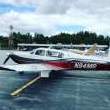



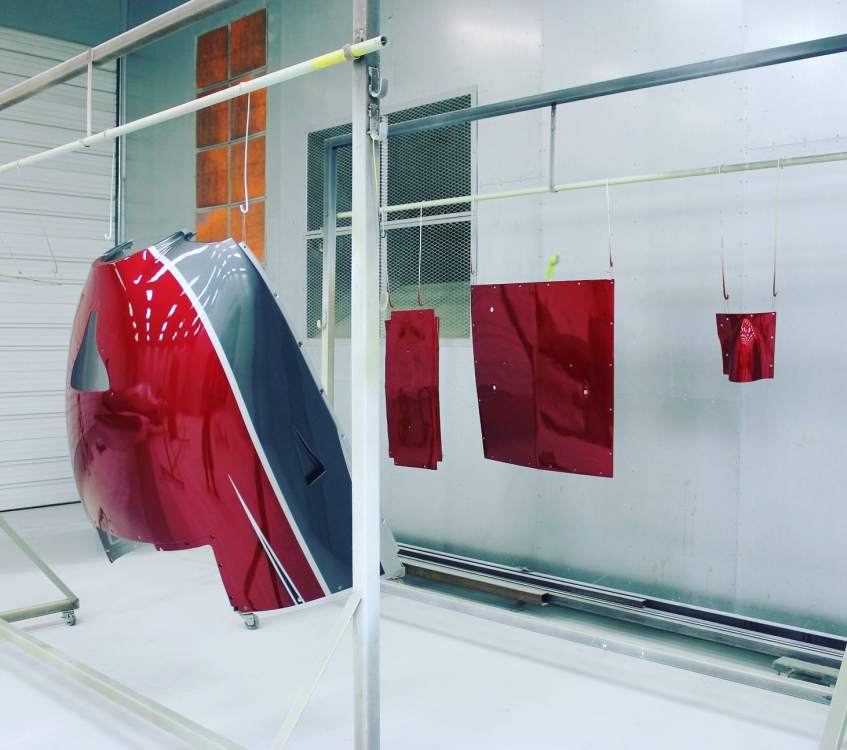
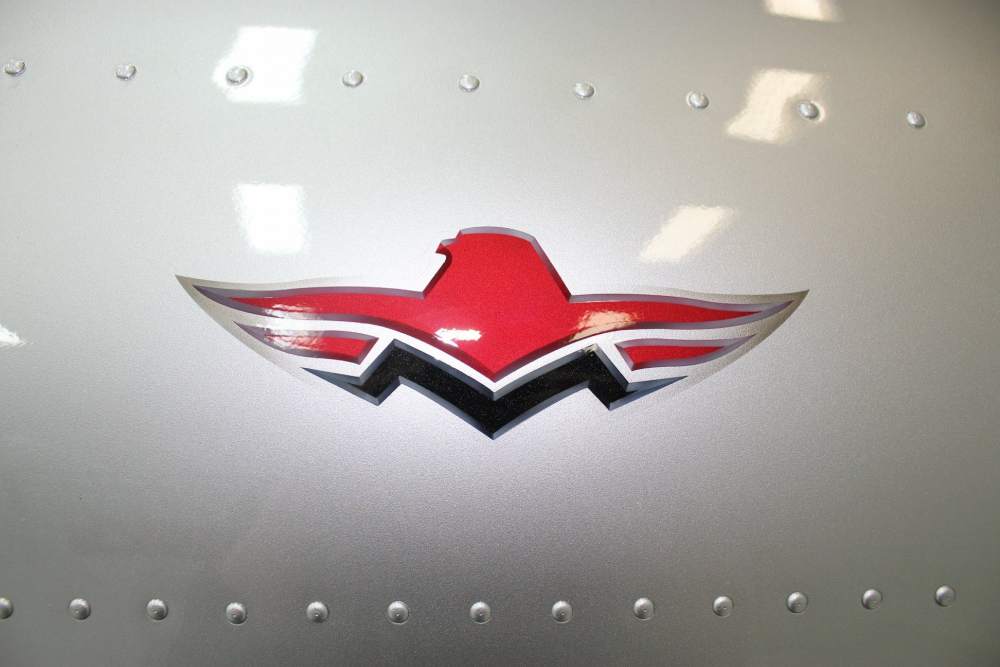

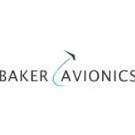




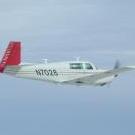



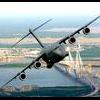



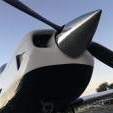
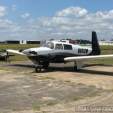


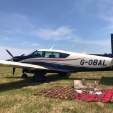

.thumb.jpg.c7c1b5a6adc6485050d2e779288dbee5.jpg)
